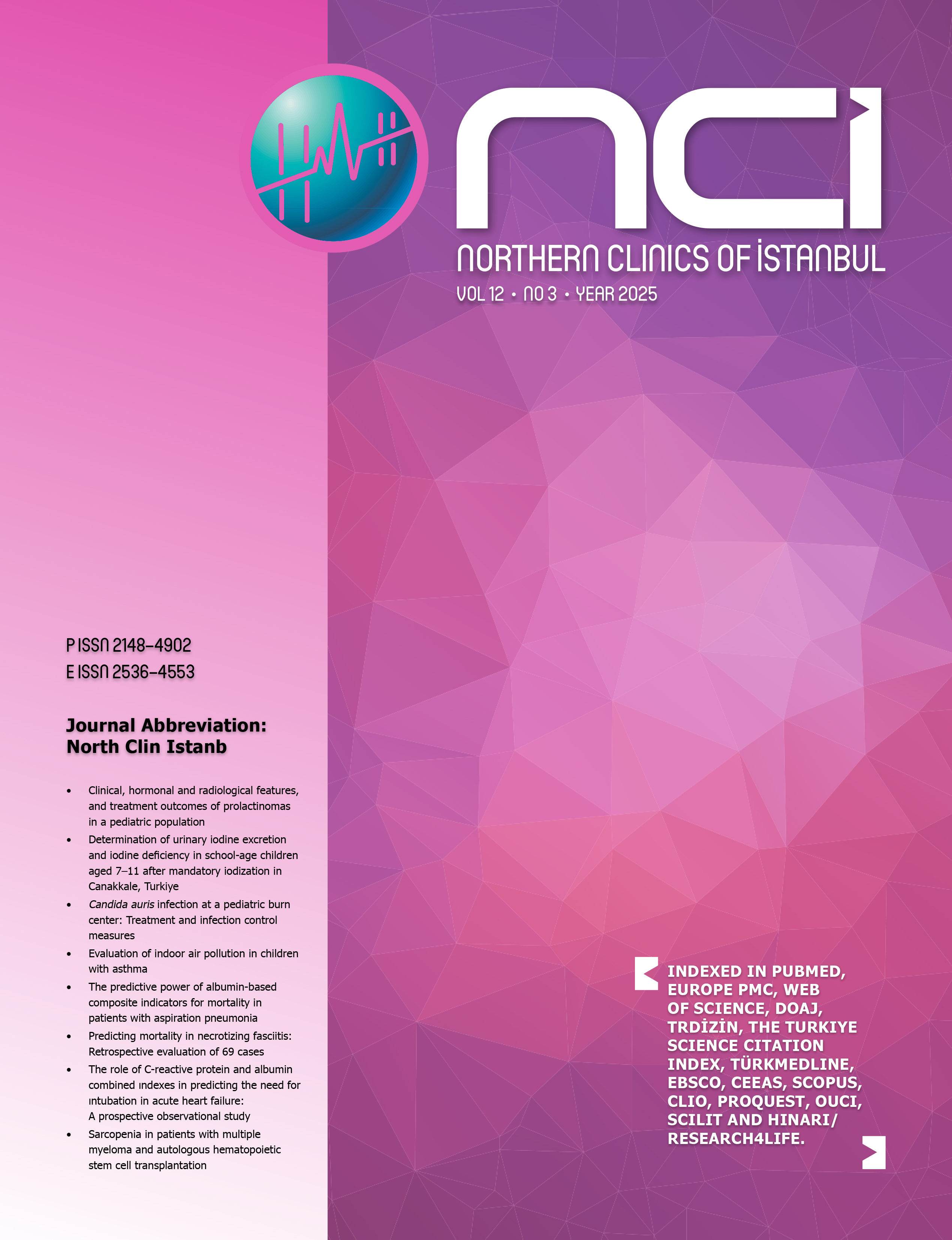Evaluation of the effect of unilateral and bilateral inferior oblique myectomy on fundus torsion in primary and secondary inferior oblique overaction
Omer Faruk Yilmaz1, Halit Oguz21Department of Ophthalmology, Goztepe Prof. Dr. Süleyman Yalcin City Hospital, Istanbul, Turkiye; Department of Ophthalmology, Istanbul Medeniyet University Faculty of Medicine, Istanbul, Turkiye2Department of Ophthalmology, Istanbul Medeniyet University Faculty of Medicine, Istanbul, Turkiye
OBJECTIVE: This article evaluates the effects of unilateral and bilateral inferior oblique myectomy (IOM) on fundus torsion in primary and secondary inferior oblique overaction (IOOA).
METHODS: This study analyzed 230 OCT images of 53 eyes of 32 patients who had undergone IOM by a single surgeon in the last two years. The disc-foveal angle (DFA) was calculated by digitally measuring the angle between the horizontal line passing through the geometric center of the optic disc and the curved line connecting the fovea to the geometric center of the optic disc. DFA was classified into intorsion, normal torsion, and extortion. The DFA was measured from the OCT images before the operation in the first week, first month, third month, and sixth month.
RESULTS: When all the patients in our study were evaluated together, IOM statistically reduced the mean DFA in the third month (p=0.00). The DFA was higher in the secondary IOOA group than in the primary IOOA group (p=0.24). Bilateral IOM statistically significantly reduced DFA in the third month (p=0.00) and decreased the DFA difference between the two eyes in the third month (p=0.583). Unilateral IOM increased the DFA, rather than decreasing it, in the first week in operated eyes (p=0594) and increased the DFA difference between the two eyes after surgery (p=0.477). When we evaluated the localization of the macula as an intorsion, normal intorsion, or extortion, the extortion decreased from 36 to nine in the third month after bilateral IOM, and intorsion was seen in only two. Unilateral surgery did not significantly change fundus torsion in primary IOOA, and it caused intorsion in 3 of 6 (50%) operated eyes in secondary IOOA.
CONCLUSION: Although unilateral IOM provides a clinical improvement in secondary IOOA, it increases the difference in DFA between both eyes and causes intorsion in 50% of patients. Masked IOOA was detected in 3 of 11 (27.3%) patients who underwent unilateral IOM. When deciding on unilateral surgery, the possibility of increased DFA difference between both eyes, intorsion in the operated eye, and masked IOOA in the other eye should be considered.
Primer ve sekonder inferior oblik hiperfonksiyonda unilateral ve bilateral inferior oblik myektominin fundus torsiyonuna etkisinin değerlendirilmesi
Omer Faruk Yilmaz1, Halit Oguz21Göztepe Prof. Dr. Süleyman Yalçın Şehir Hastanesi, Göz Hastalıkları Kliniği, İstanbul; İstanbul Medeniyet Üniversitesi Tıp Fakültesi, Göz Hastalıkları Ana Bilim Dalı, İstanbul2İstanbul Medeniyet Üniversitesi Tıp Fakültesi, Göz Hastalıkları Ana Bilim Dalı, İstanbul
Giriş: Bu makalenin amacı primer ve sekonder inferior oblik hiperfonksiyonda (İOH) unilateral ve bilateral inferior oblik miyektominin (İOM) fundus torsiyonuna etkisini değerlendirmektedir.
Yöntemler: Çalışmamızda son iki yılda tek cerrah tarafından İOM yapılan 32 hastanın 53 gözüne ait 230 OCT incelendi. Operasyon öncesi 1. hafta, 1. ay, 3. ay ve 6. ay OCT görüntülerinden Disk-fovea açısı (DFA) hesaplandı. DFA optik diskin geometrik merkezinden geçen yatay çizgi ile foveayı optik diskin geometrik merkezine bağlayan çizgi arasındaki açının dijital olarak ölçülmesiyle hesaplandı. DFA intorsiyon, normal torsiyon ve ekstorsiyon olarak 3 grupta sınıflandırıldı.
Bulgular: Çalışmamızda tüm hastalar birlikte değerlendirildiğinde İOM istatistiksel olarak 3. ayda ortalama DFA'yı azaltmaktadır (p=0.00). Ortalama DFA, sekonder İOHlu kişilerde primere göre daha yüksekti (p=0.24). Bilateral İOM 3. ayda hem DFA'yı (p=0.00) hemde iki göz arasındaki DFA farkını azalttı (p=0.583). Unilateral İOM 1. haftada DFA'yı azalmak yerine artırdı (p=0594) ve ameliyat sonrası iki göz arasındaki DFA farkını artırdı (p=0.477). Macula lokalizasyonunu intorsiyon, normal torsiyon ve ekstorsiyon olarak değerlendirdiğimizde, bilateral İOM sonrası 3. ayda ekstorsiyon 36'dan dokuza düştü ve sadece iki hastada intorsiyon görüldü. Unilateral İOM, primer İOH'da fundus torsiyonunda anlamlı değişiklik yapmadı ve sekonder İOHda 6 gözün 3'ünde (%50) intorsiyona neden oldu.
Sonuç: Unilateral İOM, sekonder İOHlu hastalarda klinik başarı sağlasa bile iki göz arasındaki DFA farkını artırmakta ve hastaların %50'sinde makulada intorsiyona neden olmaktadır. Tek taraflı İOM yapılan 11 hastanın 3'ünde (%27,3) cerrahi sonrası diğer gözde maskelenmiş İOH tespit edildi. Unilateral cerrahiye karar verirken her iki göz arasında DFA farkının artması, ameliyat edilen gözde intorsiyon ve diğer gözde maskeli İOH ihtimali göz önünde bulundurulmalıdır. (NCI-2023-2-9)
Manuscript Language: English





















